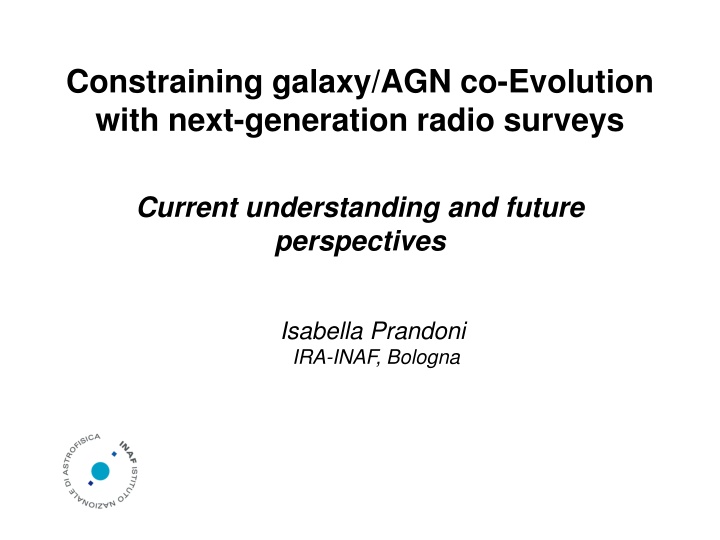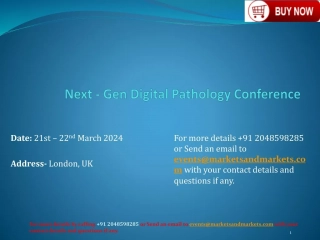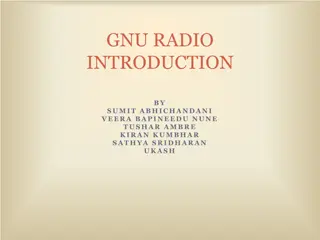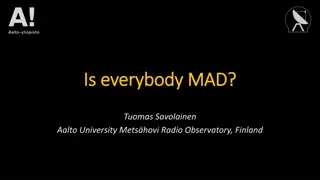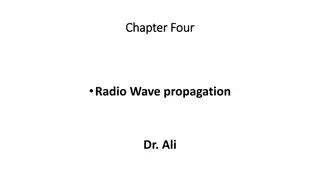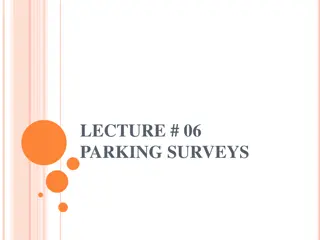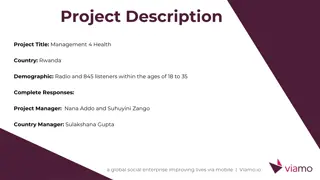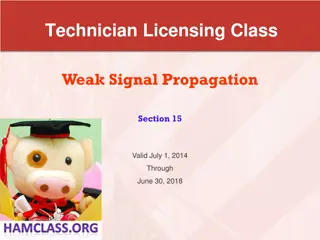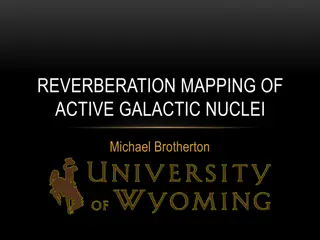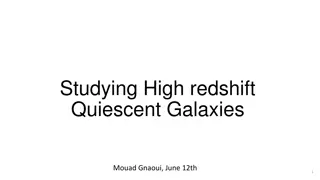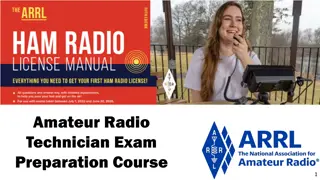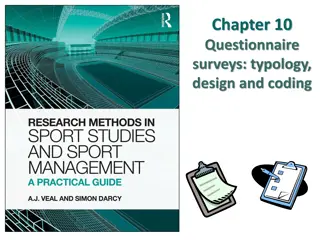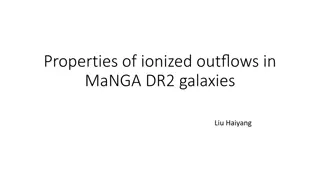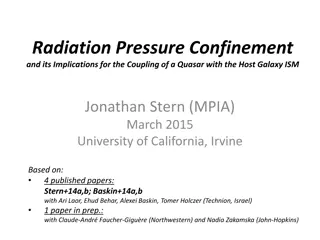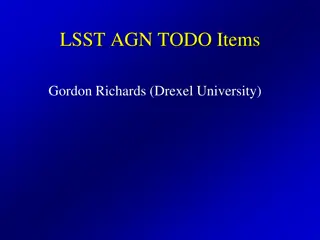Co-Evolution of Galaxies and AGN with Next-Gen Radio Surveys: Insights and Prospects
Understanding the co-evolution of galaxies and active galactic nuclei (AGN) through next-generation radio surveys is crucial for advancing astrophysical knowledge. These surveys offer a comprehensive view of star formation, AGN activity, and AGN feedback mechanisms. The quest for multi-band information, source redshifts, and the role of radio surveys in constraining the faint radio sky are highlighted. Exciting prospects include advancements in AGN classification, host galaxy properties, and environmental studies. Future research aims to develop new evolutionary models based on source counts and statistical analyses.
Download Presentation

Please find below an Image/Link to download the presentation.
The content on the website is provided AS IS for your information and personal use only. It may not be sold, licensed, or shared on other websites without obtaining consent from the author.If you encounter any issues during the download, it is possible that the publisher has removed the file from their server.
You are allowed to download the files provided on this website for personal or commercial use, subject to the condition that they are used lawfully. All files are the property of their respective owners.
The content on the website is provided AS IS for your information and personal use only. It may not be sold, licensed, or shared on other websites without obtaining consent from the author.
E N D
Presentation Transcript
Constraining galaxy/AGN co-Evolution with next-generation radio surveys Current understanding and future perspectives Isabella Prandoni IRA-INAF, Bologna
The promise of next-generation RC surveys ECDFS S>40 uJy Adapted from Bonzini+2013 Not affected by dust extinction/gas obscuration Complete census of SF, AGN activity, up to high-z and down to RQ regime Complete view of AGN feedback: a) QSO-mode feedback (winds) SF quenching (RE/RQ AGN) b) jet-mode feedback maintain massive galaxies red and dead (RI/RL AGN) FIRST/ NVSS SKA SKA Precursors high-resolution resolved studies physics of SF/AGN 11/2/16 I. Prandoni
The Quest for Multi-band Information Panchromatic approach is key Source redshifts: spectroscopy + multi-band photometry Multi-band Information - 2020 AGN/SFG & RL/RQ AGN separation mid/far IR colors (WISE+Herschel) + X-ray (eROSITA) AGN classification: HEG (Seyfert/QSO) vs LEG (Liners, ETS) High S/N optical spectra (BPT diagnostic, TAIPAN, GAMA) Host galaxy properties (mass , color, sSFR, bulge prominence, etc.) Environment RC + HI interplay gas and SF/AGN Prandoni & Seymour 2015 11/2/16 I. Prandoni
Constraining the faint radio sky Role of RC wide-area/deep surveys The quest for new evolutionary models: Constraints from source counts 100 10 1 10 HDF-South (Huynh+05) COSMOS (Bondi+08) VVDS (Bondi+03) LH 1046+59 (O&M08) LH (de Ruiter+97) LH (B&I06) LH (Ibar+09) LHW (Prandoni+16) LH 1046+59 (Condon+12) 100 1.4 GHz Source Counts SXDF (Simpson+06) SSA13 (Fomalont+06) ATLAS-DR2 (Hales+14) 13h XMM (Seymour+04) ATESP (Prandoni+01) HDF-North (B&I06) PDF (Hopkins+03) ELAIS N2 (B&I06) 1000 Prandoni et al., in prep. ECDFS (Padovani+15) S3-SEX simulations I. Prandoni
Constraining the faint radio sky Role of RC wide-area/deep surveys The quest for new evolutionary models: Constraints from source counts LH Field: inner 2 deg2 -Prandoni et al., in prep. SFGs seem to show an excess wrt models (but see Mancuso et al. 2016) Preliminary no strong constraints on RQ AGNs Precursors: all-sky to similar depth SKA will push to higher z/lower L huge statistics at all epochs/full Lum. range multi-variate studies of LF [vs z, stellar mass, L, environment, etc.] S3-SEX simulations I. Prandoni
Constraining the faint radio sky Role of RC wide-area/deep surveys The quest for new spectral index distributions: Constraints from multi-frequency deep surveys ATESP 1.4 + 5 GHz: S>500 uJy Mignano, IP+ 08 flat flat steep steep GOODS-N 1.4 + 5.5 GHz: S>50 uJy Guidetti, IP+ in prep. steep Passive AGN SFG Passive:flat, compact, weak flat 7/2/15
The radio view of RQ AGNs Role of deep/high resolution RC surveys What triggers radio emission in RQ AGNs? - - - - pure SF in the host galaxy? SF and AGN related emission do co-exist? Rare or common? What is the duty cycle ? How this change with redshift? Is there any significant jet feedback in RQ AGNs? ECDFS @ LBA: 2/4 detected - z~1 ~500 pc scale - AGN~50-70%; HDF-N z~4.4 Maini, IP, et al. 2016 EVN: core/jet 70 pc Chi+13 11/2/16 I. Prandoni
The Radio View of RQ-AGNs Role of deep/sub-arcsec resolution RC surveys eMERGE Legacy Project (see talk T. Muxlow): GOODS-N at (sub-)uJy sensitivity eMERLIN+JVLA @ 1.4 + 5.5 GHz: from 200 to 50 mas resolution complemented by 1.4 GHz EVN survey (see talk J. Radcliffe) Commissioning 5 GHz eMERLIN obs. (0.2 res.) JVLA @ 5 GHz; 0.5 resolution 94 sources, S>6 uJy; 80% with AGN signature! Guidetti, Bondi, IP+ 2013 Guidetti, Bondi, IP+ in prep. J123649+620737 @ z~2.3 8 kpc 1.4 GHz MERLIN (0.4 , + 5 GHz e-MERLIN (0.2 ) HST ACS i band image (Casey+09) I. Prandoni, INAF - IRA 8
Summary Next Generation RC surveys: SFH and AGN activity & related feedback at any redshift, any radio power, no obscuration effects crucial for issues that arise mainly at radio-band, like e.g. RL/RQ dichotomy, the origin of radio emission in RQ AGN, etc. crucial when radio-band provide essential information, like e.g. obscured AGN/SF or Lx-Lrprojection of BH fundamental plane Deep uJy all-sky/wide area surveys [LOFAR/ASKAP/MWA/SKA-LOW and MID]: Better constraints to models (evolution & radio spectra) statistical approach to RQ/RL dicothomy Deep sub-arcsec sub-uJy surveys [eMERLIN, JVLA, SKA-Mid/Band 5]: resolved studies AGN/SF related phenomena up to high redshift; physics of feedback In conjunction with HI surveys: Complex interplay between cold gas and SF/nuclear activity/feedback 11/2/16 I. Prandoni
THANKS! 11/2/16 I. Prandoni
The interplay between gas & nuclear activity Role of RC/HI surveys Exploiting large statistics from next-generation RC/HI radio surveys Pilot study at z~0 in LH region: HI stacking experiment for SDSS galaxies Gereb + 2013 11/2/16 I. Prandoni
The radio View of RQ AGNs Role of deep/wide-area RC surveys Exploiting large statistics from next-generation wide-area deep radio surveys (+ multi-band information) 1] incidence of Radio-Excess sources: vs redshift; AGN class, Luminosity, etc 2] selection of sub-sample for higher resolution follow-ups (high-v or VLBI) ECDFS Maini+ 2016 SFR (IR) from SED Fitting AGN Core 50% 70% 11/2/16 I. Prandoni
Observational Evidence for Galaxy/AGN Co-Evolution Bimodality in galaxy population Blue galaxies/Star Forming MS Red Galaxies/Red Sequence Green Valley/AGN mostly RQ mostly RL a) QSO-mode feedback (winds) SF quenching b) Radio-mode feedback (jets): maintain galaxies red and dead Observed in local Universe (SDSS) how this picture evolves? many physical details still to be understood
The Radio View of RQ-AGNs Role of deep/high resolution RC surveys What triggers radio emission in RQ AGNs? - - - - pure SF in the host galaxy? SF and AGN related emission do co-exist? Rare or common? What is the duty cycle ? How this change with redshift? Is there any significant jet feedback in RQ AGNs? High-z RQ AGN Maini, PhD Thesis 2016 Local RQ AGN Behar+ 2015 11/2/16 11/2/16 I. Prandoni
The Radio View of RQ-AGNs Role of deep/high resolution RC surveys What triggers radio emission in RQ AGNs? - - - - pure SF in the host galaxy? SF and AGN related emission do co-exist? Rare or common? What is the duty cycle ? How this change with redshift? Is there any significant jet feedback in RQ AGNs? Magnetic coronal activity? High-z RQ AGN Maini, PhD Thesis 2016 Local RQ AGN RL AGN Local RQ AGN Behar+ 2015 11/2/16 11/2/16 I. Prandoni
The promise of next-generation RC surveys Evolution of low-P AGNs (incl. RQ AGN): current understanding ECDFS Field: 0.3 deg2 Padovani+ 2015 low-P RL AGNs weak evolution; peak at z 1 RQ AGNs evolve more rapidly luminosity dependent peak Precursors/SKA: huge statistics at all epochs I. Prandoni
Observational Evidence for Galaxy/SMBH Co-Evolution Local LF of galaxies AGN feedback SFH vs BH Growth Bower et al. 2006 AGN Quenching Kormendy & Ho (2013)
The Radio View of RQ-AGNs Role of deep/high resolution RC surveys 14+2 hours in Array A & B [PI: Muxlow] 7 pointing mosaic (matching the e-MERLIN L-band FoV) 16 Ifs 2048 MHz BW 1.4 uJy/b rms at center (50% < 3 uJy/b); 0.5 arcsec resolution (A+B arrays) 94 sources at d<7 arcmin, S>6 uJy; 50% with 10<S<30 uJy Mosaic rms contours Guidetti, Bondi, IP et al. in prep. 8/27/2024 I. Prandoni, INAF - IRA 18
